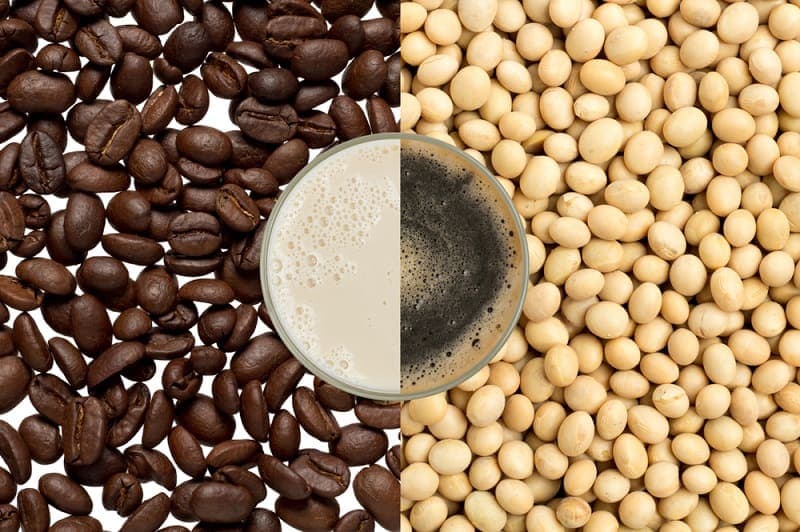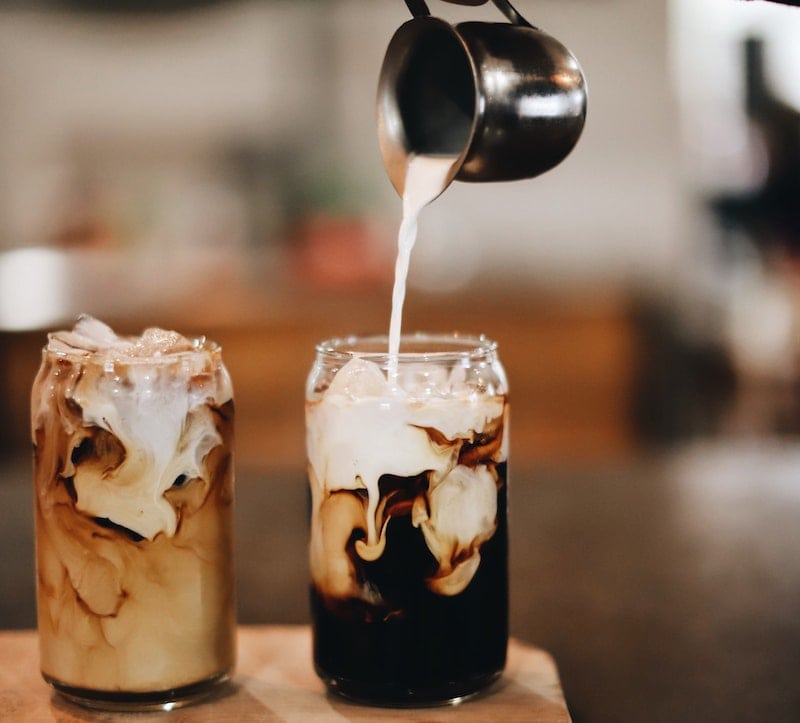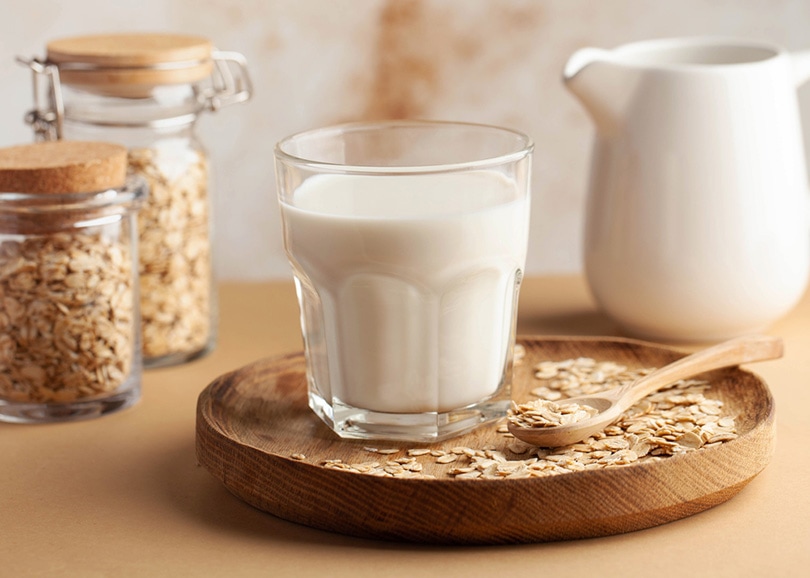
We can’t think of many things less appealing than chunks of milk in our coffee. If you’ve ever used soy milk in coffee, chances are high you have experienced the unpleasant effect of curdling. Soy milk is particularly prone to curdling, and in this article, we’re going to explain why. We cover the science behind soy milk curdling and give you some ways to mitigate the effects so you can enjoy soy milk in your coffee without having to chew it.

Why Does Soy Milk Curdle?
Everyone can agree that curdled milk is disgusting, and it turns out that learning the science behind curdling only makes it more disgusting. Temperature and acidity are the two main causes of curdling, but the underlying driving force is bacteria in your milk. As milk ages, bacteria consume the milk’s sugars and produce lactic acid as a byproduct. Lactic acid is a coagulant that causes the proteins in milk to clump together, causing curdling.
The chain of events from bacteria consuming sugar to producing lactic acid and the chemical reaction behind protein clumping happens faster at higher temperatures, which is why leaving milk out of the refrigerator causes it to go bad quickly. Milk stored in the refrigerator still goes bad, but it takes much longer.
So far, we’ve only discussed curdling in general, so what does it have to do with coffee? The problem comes from the fact that coffee is naturally acidic. By an unlucky coincidence, coffee is acidic enough to drive the curdling process without bacterial intervention, so lucky coffee drinkers can experience curdling whenever we add soy milk to coffee.
If that wasn’t bad enough, remember how we said higher temperatures cause faster curdling? Well, hot coffee is plenty hot enough to accelerate the process, which is why you get instant curdling when you pour some soy milk into your mug.

How to Prevent Soy Milk From Curdling
Now that we know what curdling is and why coffee is particularly good at causing it, what can we do about it? The two main approaches you might take are lowering your coffee’s acidity and lowering your coffee’s temperature.
Acidity
Lowering your coffee’s acidity is a good idea, but having fine control over the pH of coffee is a tricky business. Different coffee beans, brewing methods, and brewing temperatures can influence your coffee’s pH, and getting reproducible results is difficult. What’s more, taking steps to raise your coffee’s pH and make it less acidic won’t have a large enough effect to prevent curdling.
However, there are a few general guidelines that can help you make coffee with less acidity. African coffees tend to be some of the most acidic, and South and Central American coffees are usually less acidic. If you aren’t committed to drinking Kenyan and Ethiopian coffee, try getting some Colombian, Nicaraguan, or Brazilian beans.
You could also change your brewing method, although this has a smaller effect than choosing a less acidic origin. Cold brew is significantly less acidic than hot brewing methods. Many people assume that cold brew has to be consumed cold, but heating cold brew before drinking it is 100% acceptable if you like drinking hot coffee.

Temperature
A better approach is to focus on the temperature side of things. If you want to use soy milk in hot coffee, you’ll have to be patient and add the soy milk a little bit at a time. If you splash a bunch of soy milk into piping hot coffee, you’ll be on the express train to curdle town. The trick is to start with the soy milk in the mug before adding the coffee incrementally.
As you slowly pour the coffee into the milk, stop frequently and stir gently. The goal is to slowly increase the milk’s temperature and let the coffee cool slightly to decrease the rate of curdling. We’ve had success with this method, but it isn’t a curdling panacea. Sometimes we wind up with curdled soy milk despite our best efforts.
Switch To Another Non-Dairy Milk
If you don’t want to purchase less acidic beans and painstakingly pour your coffee every morning is getting old, your only other option is to try different non-dairy milk. Oat milk is a good option that is less prone to curdling, and several brands now sell barista editions of their non-dairy milk. We’ve found these barista versions of alternative milk to be great for frothing and less likely to curdle.


Final Thoughts
Soy milk is a great option to use in coffee—when you can prevent it from curdling. Coffee’s high temperature and acidity make it very effective at turning your smooth, delicious soy milk into a lumpy, repulsive mess. If you’re determined to use soy milk in hot coffee, consider changing to a less acidic origin, making cold brew and then heating it, and pouring your coffee into the soy milk instead of the other way around.
If all of those options don’t work, your best bet is to ditch the soy milk and choose another non-dairy milk instead. We’ve had success using oat milk without any curdling, and several companies make barista versions of their non-dairy milk specifically designed to be used in coffee.
Featured Image Credit: sumeto, Shutterstock















